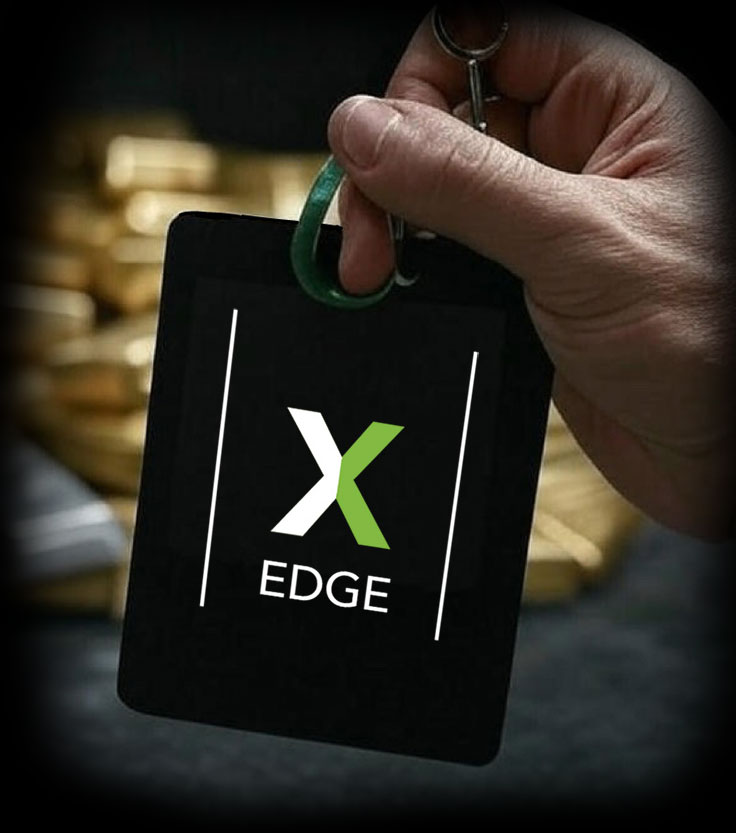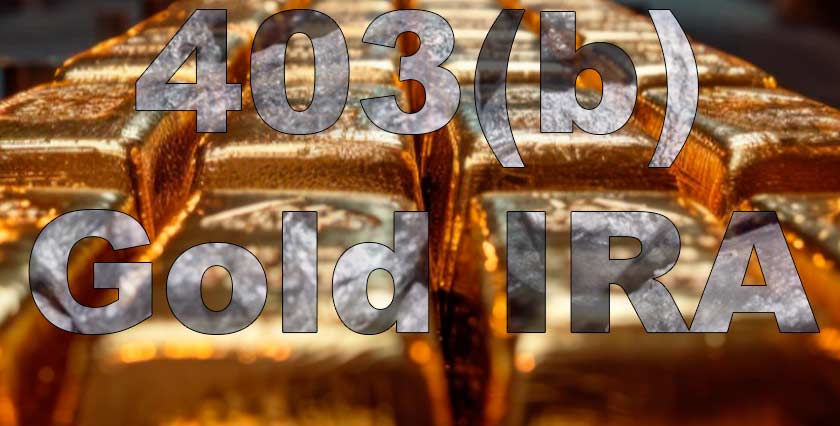A 403(b) Gold IRA offers a unique investment opportunity for diversification and protection against economic uncertainties. This involves rolling over funds from a 403(b) retirement account into a Gold IRA, which holds physical precious metals like gold, silver, platinum, and palladium. These metals provide a hedge against inflation and market volatility. This guide explores the benefits, processes, and considerations involved in converting a 403(b) into a Gold IRA, highlighting the potential for safeguarding your retirement savings and enhancing financial security.
| Key Takeaways |
|---|
| Diversifying with other precious metals can strengthen your retirement account. |
| A 403(b) rollover into a precious metals IRA offers tax advantages and asset protection. |
| A self-directed IRA provides flexibility to include precious metals and other investments. |
| Consult a financial advisor for guidance on precious metals investments in retirement accounts. |
| Consider the role of platinum bullion and other precious metals in your gold IRA investing strategy. |
| Choose a reputable precious metals dealer like OWNx to ensure quality and compliance with IRS-approved metals. |
Learn more about the OWNx Precious Metals IRA
Understanding Precious Metals in Retirement Accounts
What is a 403(b) Plan?
A 403(b) plan is a retirement savings vehicle designed for employees in public schools, non-profits, and certain religious institutions. It allows participants to contribute pre-tax income, which grows tax-deferred until withdrawal, typically at retirement. This tax advantage helps in reducing the taxable income in the year of contribution, providing an immediate benefit. The plan generally includes traditional assets like stocks and mutual funds, but often lacks the diversification that can provide stability during economic downturns. Precious metals, therefore, can play a crucial role in offering additional security and growth potential in a retirement portfolio.
What is a Gold IRA?
A Gold IRA is a self-directed individual retirement account that includes physical precious metals, such as gold, silver, platinum, and palladium. Unlike traditional IRAs, which are typically restricted to paper assets like stocks, bonds, and mutual funds, a Gold IRA allows investors to diversify with tangible assets. These metals are valued for their intrinsic worth and historical role as a hedge against inflation and economic downturns. Physical gold, for example, is often seen as a safe-haven asset that retains value even when other investments falter. By including these metals in a retirement account, investors can protect their savings from the erosive effects of inflation and economic instability.
Why Consider a 403(b) to Gold IRA Rollover?
The primary benefit of a 403(b) to Gold IRA rollover is the added diversification and protection against market volatility. While traditional assets like stocks and bonds can be affected by economic downturns, precious metals generally retain or increase their value. This makes them an effective hedge against inflation and market instability. Additionally, owning physical metals provides a sense of security, as these assets are tangible and historically stable. This is particularly beneficial during times of economic uncertainty when traditional markets are volatile. Moreover, precious metals like gold have shown consistent value retention and even appreciation over time, making them a reliable component of a diversified investment portfolio.
Types of Precious Metals in Gold IRAs
Gold Coins and Bullion Bars
Gold IRAs can hold a variety of physical gold assets, including bullion bars and gold coins. Popular choices include the American Gold Eagle coin, known for its purity and government-backed guarantee. These assets are not only a store of value but also have the potential for price appreciation. Gold coins, in particular, are favored for their convenience and liquidity, making them an ideal choice for investors looking to diversify their holdings. Bullion bars, on the other hand, are valued for their purity and lower premiums over the spot price of gold, offering a more cost-effective way to invest in physical gold.
Other Precious Metals
In addition to gold, Gold IRAs can include other precious metals like silver, platinum, and palladium. These metals have their own market dynamics and industrial applications, which can influence their value. Silver, for instance, is widely used in electronics and solar panels, making it both an investment and an industrial metal. Platinum and palladium are critical in automotive catalytic converters, contributing to their demand and value. Including a mix of these metals in a Gold IRA can provide further diversification, spreading risk and potentially enhancing returns. Each metal has unique attributes and market factors, allowing investors to tailor their portfolios according to their risk tolerance and investment goals.
Steps to Roll Over a 403(b) into a Gold IRA
Choosing the Right Custodian
Selecting a qualified custodian is the first critical step in rolling over a 403(b) into a Gold IRA. Custodians are responsible for managing your account and ensuring compliance with IRS regulations. It’s essential to choose a custodian with extensive experience in handling precious metals, transparent fee structures, and a solid reputation for customer service. The right custodian will also offer secure storage solutions for your physical metals in IRS-approved depositories, ensuring the safety and compliance of your investment.
Direct vs. Indirect Rollovers
There are two main methods for transferring funds from a 403(b) to a Gold IRA: direct and indirect rollovers. In a direct rollover, the funds are transferred directly from the 403(b) plan to the Gold IRA without the account holder taking possession of the money. This method is generally preferred as it avoids potential taxes and penalties that can arise from mishandling the transfer. An indirect rollover involves the account holder receiving the funds and then depositing them into the Gold IRA within 60 days. However, this method carries risks, including potential penalties and taxes if the transfer is not completed within the specified timeframe. Understanding these methods and their implications is crucial for a smooth transition.
Selecting Precious Metals
When setting up a Gold IRA, investors must choose the specific precious metals they wish to include. The IRS mandates that these metals meet strict purity standards: gold must be at least 99.5% pure, silver 99.9%, platinum 99.95%, and palladium 99.95%. Acceptable forms include bullion bars and coins from recognized mints, such as the American Gold Eagle. Diversifying within the precious metals category can mitigate risks associated with market fluctuations and maximize potential returns. For instance, combining investments in gold with silver or platinum can balance the portfolio, as these metals often react differently to economic changes. This strategy helps in maintaining a stable investment profile and capitalizing on different market trends.
Similar to your standard OWNx account, with the OWNx Precious Metals IRA, you’re able to acquire these metals at less cost than typical IRAs, because we allow you to buy fractional ownership of larger bars.

Start buying precious metals at cost.
Key Considerations and Potential Challenges
Costs Involved
Investing in a Gold IRA involves several costs, including custodial fees, storage fees, and insurance. These costs can vary depending on the custodian and the amount of precious metals held. It’s crucial to understand these costs upfront and compare different custodians to find the best value. Storage fees, for example, cover the secure storage of your physical metals in an IRS-approved depository, protecting your investment from theft or loss. Insurance costs are also important to consider, as they provide an additional layer of protection for your assets. While these expenses are necessary for the security and management of your Gold IRA, they can impact the overall returns, making it essential to choose a custodian that offers competitive pricing.
Liquidity and Access
One consideration for Gold IRA investors is liquidity. Unlike stocks or bonds, which can be quickly sold or traded, physical precious metals can be less liquid. Selling these assets can take time and may involve additional costs, particularly if market conditions are not favorable. This lack of liquidity can be a disadvantage if you need to access funds quickly. Therefore, it’s essential to have a diversified portfolio that includes more liquid assets to cover immediate financial needs while holding precious metals for long-term security. Moreover, understanding the process of selling precious metals, including potential costs and market timing, is crucial for maximizing returns and ensuring easy access to your investment.
Market Volatility
While precious metals are often seen as a safe-haven investment, they are not immune to market volatility. Prices can fluctuate due to various factors, including economic conditions, geopolitical events, and changes in supply and demand. For example, an increase in mining activity can lower prices, while economic instability can drive prices up. Investors must be prepared for these fluctuations and consider them when planning their investment strategy. Diversifying within the precious metals category and maintaining a balanced portfolio can help mitigate these risks. Additionally, staying informed about market trends and potential factors affecting precious metal prices can enable investors to make timely and informed decisions, enhancing the stability and growth potential of their investment.
Legal and Regulatory Considerations
IRS Guidelines for Gold IRAs
Gold IRAs must adhere to specific IRS regulations to maintain their tax-advantaged status. The IRS requires that the precious metals included in these accounts meet certain purity standards: gold must be at least 99.5% pure, silver 99.9%, platinum 99.95%, and palladium 99.95%. These metals must also be in the form of approved bullion bars or coins, such as the American Gold Eagle, Canadian Maple Leaf, or Austrian Philharmonic. Furthermore, these assets must be stored in an IRS-approved depository to ensure their safety and compliance with federal guidelines. The IRS stipulates that the account holder cannot take physical possession of the metals to avoid tax penalties, maintaining the integrity and security of the investment.
Tax Implications
Gold IRAs offer similar tax benefits to traditional IRAs, with a few distinctions. Contributions to a traditional Gold IRA may be tax-deductible, reducing taxable income for the year of contribution. The investments within the IRA grow tax-deferred, meaning that taxes are not paid on gains until the funds are withdrawn, typically during retirement. This structure allows for potentially significant growth without the immediate tax burden. In contrast, contributions to a Roth Gold IRA are made with after-tax dollars, and qualified withdrawals, including earnings, are tax-free. This is particularly advantageous for those who anticipate being in a higher tax bracket during retirement, as they can withdraw funds without additional tax liabilities.
Understanding the rules around withdrawals is critical to maximizing the benefits of a Gold IRA. Early withdrawals (before age 59½) generally incur a 10% penalty in addition to standard income taxes, unless an exception applies. Additionally, required minimum distributions (RMDs) must begin at age 72 for traditional IRAs, including Gold IRAs. However, Roth IRAs do not require RMDs during the account holder’s lifetime, providing more flexibility in managing retirement income and estate planning. Investors should plan their withdrawals strategically to minimize tax impacts and align with their overall financial goals.
Choosing the Best Gold IRA Companies
Selecting the right custodian for your Gold IRA is crucial for ensuring a smooth and secure investment experience. When choosing a custodian, consider factors such as the company’s reputation, fee structures, and range of services. Choose a reputable company like OWNx that is well-known for their expertise in handling precious metals IRAs and providing excellent customer service. OWNx can offer comprehensive services, including assistance with the rollover process, guidance on selecting the appropriate precious metals, and secure storage solutions in IRS-approved depositories.
Transparency in fee structures is vital when selecting a custodian. Potential investors should understand all costs associated with opening and maintaining a Gold IRA, including custodial fees, storage fees, and transaction costs. Some companies may offer flat fees, while others charge based on the value of the assets held. It’s essential to compare these costs and ensure you are getting the best value for your investment. Additionally, reviewing customer testimonials and independent ratings can provide valuable insights into the reliability and quality of the company’s services. These reviews can help you make an informed decision, ensuring that your custodian aligns with your financial goals and risk tolerance.
Benefits of Using OWNx for your Precious Metals IRA
OWNx offers numerous advantages for those looking to invest in precious metals:
- Zero Premiums: OWNx does not charge premiums on trades, allowing you to buy at the Ask price and sell at the Bid price, maximizing the value of your investment.
- No Minimum Investment: Start investing with as little or as much as you want, making it accessible for all investors.
- Low Annual Fees: OWNx charges a low annual maintenance fee of $195, significantly less than many competitors.
- Simplified Setup: OWNx streamlines the setup process with an intuitive online platform, connecting your IRA, custodian, and depository accounts seamlessly.
- Diversification: Adding low-correlation assets like gold and silver to your retirement portfolio can buffer against market volatility and inflation.
- Tangible Assets: Experience the security of holding physical precious metals, known for their resilience and long-term value.
- Smart Investing: With OWNx, you get more ounces for your money due to low premiums on gold and silver bars.
- Flexibility and Control: Easily buy and sell within your IRA, adapting to market conditions with ease.
- Fractional Investment: Only OWNx allows you to buy fractional ownership of larger precious metals bars, allowing you to acquire more metal for your money.
Ongoing Management
Managing your Gold IRA with OWNx is straightforward. Our platform provides real-time insights and tools to monitor your investments. You can easily make adjustments, buy or sell metals, and keep track of market trends, ensuring your investment remains aligned with your long-term financial goals.
We offer a convenient, secure, and cost-effective way to diversify and protect your retirement savings with precious metals. Their comprehensive services and intuitive platform make it easy to navigate the complexities of precious metals investing, providing peace of mind and financial security in an unpredictable economic landscape. For more details on how to get started contact us today.
Conclusion
A 403(b) to Gold IRA rollover can provide significant benefits, including diversification, protection against economic instability, and potential tax advantages. While there are costs and challenges, such as custodial fees and market volatility, the stability and value retention of precious metals make them an attractive addition to any retirement portfolio. Careful planning, thorough research, and selecting a reputable custodian are essential steps to ensure a successful and secure investment.
Incorporating precious metals into your retirement strategy can safeguard your savings against inflation and market downturns, ensuring a more secure financial future. As with any investment, it is crucial to stay informed and consult with financial advisors to tailor your investment approach to your specific needs and goals. This strategic move can help protect your retirement savings and provide peace of mind in an unpredictable economic landscape.
For those considering a 403(b) to Gold IRA rollover, the next steps include researching potential custodians, understanding the associated costs, and setting clear investment goals. OWNx is happy to help you do this and can assist with the initial setup and ongoing management of your account. This proactive approach will help you capitalize on the benefits of precious metals investments, ensuring a stable and prosperous retirement.
FAQ
A Precious Metals IRA is a self-directed IRA account that lets you diversify your portfolio with physical precious metals, providing a robust investment that safeguards your wealth against economic uncertainties and market fluctuations.
A 403(b) rollover into a Precious Metals IRA involves transferring retirement funds to a self-directed IRA that allows investment in precious metals.
Precious metals permitted in a Gold IRA include gold, silver, platinum, and palladium in the form of bullion bars and coins.
A Gold IRA allows investment in physical precious metals, whereas traditional IRAs typically involve paper assets like stocks and mutual funds.
A financial advisor can provide guidance on the rollover process, investment options, and ensuring compliance with IRS guidelines to optimize your retirement savings.

